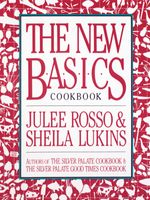Mashed potatoes with whole milk, melting butter, and salt and pepper—served just to the right of the meat loaf and left of the string—was the best meal in the world and a good part of growing up.
French- or home-fried, baked, boiled, scalloped, or in salads, potatoes are the starch of choice in so many homes. Serve them up—white or sweet, waxy or starchy—to garner praise any time of the year. They’re just too versatile to ever be out of fashion.
Varieties of Potato
We never see just one kind of potato at the market; there are always at least three or four—new potatoes, red potatoes, white potatoes, and russets. The only important fact to know is what potato is best for what preparation. Some potatoes are great baked; some aren’t. Some make wonderful fries or potato salad; others don’t. It all depends on how much starch a potato has. We’ll describe the most common potatoes and how they are best used.
New potatoes : A new potato is simply harvested before it reaches maturity and sent directly to the market instead of being stored. There is just one potato crop each year but several harvests. New potatoes are dug up in the spring and early summer—the year’s first harvest. A new potato can have a skin that is red or light brown, but the smaller the better. We’ve had them as small as your thumbnail and they’re quite irresistible.
The crop of new potatoes comes on the market in the late spring and stays through most of the summer, although some new red potatoes grown in warmer climates appear in the produce section sometime in February. A “new” potato in the supermarket from November to January is most likely not new at all—it’s been in storage. Don’t pay new potato prices for old potatoes.
Like so many other vegetables, such as corn and peas, a potato’s natural sugars begin turning to starch as soon as it’s picked. Because new potatoes are sent immediately to market, they are low in starch and still fairly sweet. They are firmer and moister than stored potatoes, so they are best steamed or boiled. They make poor baked potatoes.
Mature potatoes : Mature potatoes can be used in many ways that new potatoes cannot—mainly, baking and frying. Mature potatoes can be divided roughly into two categories: russets and all-purpose potatoes. Russets, which includes Idahos, are usually long in shape and called baking potatoes because that’s what they do best. They are the starchiest of all the potatoes, which makes for a fluffy baked potato and French fry.
All-purpose potatoes can be round or long in shape and brown or red in color. They are lower in starch and moister than baking potatoes, which makes them perfect for boiling, roasting, and slicing into salads.

